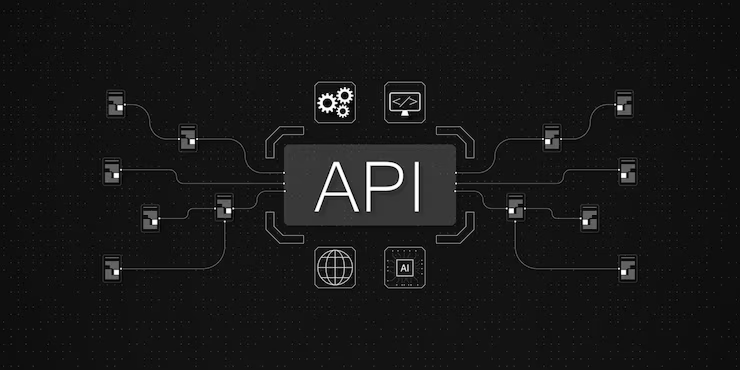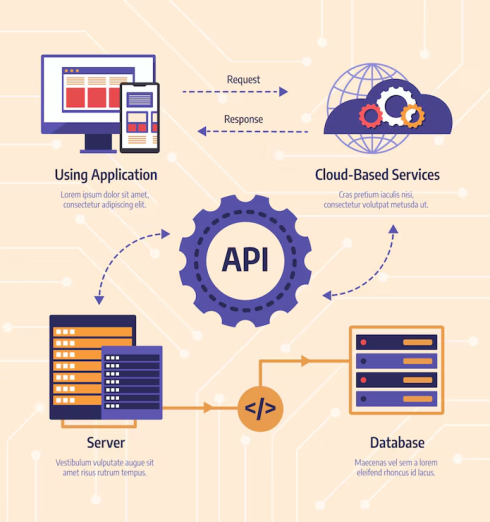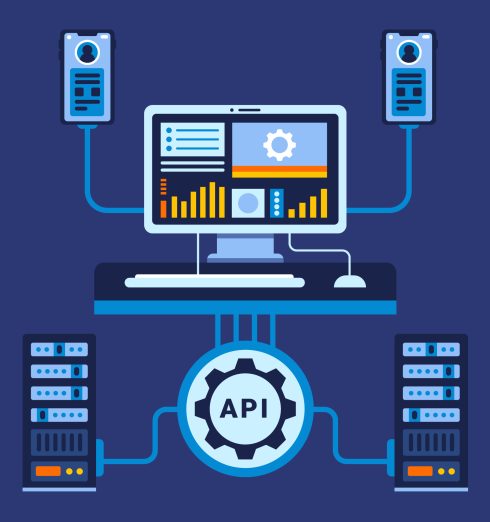Sep 14, 2024 .
By admin
API-First Development: The Secret to Scalable and Future-Proof Applications
Introduction:
As businesses grow and diversify, the need for scalable, flexible, and easily integrable systems becomes paramount. In an increasingly connected world, APIs (Application Programming Interfaces) are the
backbone of modern applications, allowing disparate systems, platforms, and services to communicate
seamlessly. Adopting an API-first development approach ensures that your applications are not only scalable but also future-proof, capable of evolving as your business needs change.
This blog explores why API-first development is the key to building robust, scalable applications that can
handle growth and how you can leverage APIs to integrate disparate systems seamlessly. We’ll also dive
into why it’s important for founders, CTOs, product architects, and engineering managers to adopt this
approach to stay competitive in today’s fast-moving digital landscape.
Understanding API-First Development
At its core, API-first development is a methodology where the application programming interface (API) is
treated as the primary building block of the system. Instead of starting development with the user interface (UI) or database design, developers focus on defining the APIs first.
This approach allows for:
- Faster development cycles: By defining the API endpoints and specifications upfront, teams can parallelize front-end and back-end development, significantly speeding up delivery.
- Consistent and reusable APIs: A well-designed API can be reused across different parts of the application and even across different projects.
- Clear integration strategy: Since the API is the main focus, it ensures that every service or product is built with integration in mind, eliminating silos.

The Business Case for API-First Development
API-first development is not just a technical choice. it’s a strategic business decision. Here’s why:
- Scalability: As businesses grow, they require systems that can scale without breaking. APIs allow businesses to easily integrate new services, third-party platforms, or even additional business units into their existing systems without disrupting operations.
- Future-Proofing: With an API-first approach, businesses can future-proof their applications by ensuring that new features or services can be integrated with minimal effort, making your system adaptable as the business evolves.
- Efficiency: An API-first strategy allows for better resource allocation by separating concerns between the front end, back end, and integrations. This leads to quicker iterations and more effective collaboration between teams.
- Cost-Effectiveness: With scalable, modular APIs in place, businesses can significantly reduce long-term maintenance costs. APIs allow for faster updates and less technical debt because you can evolve different parts of your application independently.


Accelerating Integration Across Systems
A well-built API layer is essential for integrating different systems, platforms, and applications. As
businesses expand, they often need to connect disparate systems—whether it’s an ERP system, CRM, or
cloud-based services. API-first development creates a clear and standardized interface for seamless
integration.
- Microservices Architecture: With microservices becoming the go-to solution for modern applications, an API-first approach makes it easier to decompose applications into smaller, manageable services. Each microservice can communicate with others via APIs, creating a flexible and dynamic system architecture.
- Cross-Platform Support: APIs ensure that applications can easily communicate with different platforms mobile apps, web apps, or even IoT devices. without requiring a complete redesign of the underlying system.
- External Partner Integrations: Whether it's integrating with third-party payment gateways, marketing platforms, or logistics providers, APIs provide the flexibility to connect with external systems without compromising security or performance.
Enabling Faster Time-to-Market
In today’s competitive market, speed is essential. With an API-first approach, businesses can develop and
deploy new features or services quickly, allowing them to remain agile and adapt to market changes without
delays.
- Parallel Development:Since APIs are defined before the application code is written, developers can work on different components (front-end, back-end, and API) in parallel, reducing development time significantly.
- Rapid Prototyping: API-first allows for faster prototyping and testing of new ideas. Teams can mock up API responses even before the back-end logic is implemented, enabling stakeholders to interact with a working prototype earlier in the process.
Security and Compliance
As APIs become the central point of integration, ensuring that they are secure and compliant is crucial. With
an API-first strategy, security measures can be integrated into the design phase, ensuring that potential
risks are mitigated early on.
- Standardized Authentication: By enforcing standardized authentication mechanisms (such as OAuth or JWT), APIs help protect sensitive data and ensure that only authorized users can access certain services.
- Data Privacy and Compliance: APIs can be designed to adhere to compliance standards such as GDPR, HIPAA, or SOC 2. With a clear separation of concerns between the API and the core application, compliance requirements can be addressed independently, making it easier to manage and track.
Enhancing Collaboration Between Teams
API-first development fosters better collaboration between development, operations, and business teams.
Here’s how:
- Clear Documentation: API-first development encourages teams to document their APIs upfront, which leads to clearer communication between developers, product managers, and stakeholders. This documentation ensures that everyone understands how the system will interact with external services and each other.
- Cross-Functional Collaboration: Teams can work independently and more efficiently with well-defined API contracts. This collaborative approach enhances productivity, reduces bottlenecks, and helps organizations meet deadlines faster.
Best Practices for API-First Development
To successfully implement an API-first strategy, it’s important to follow best practices:
- Use Open Standards:Make sure your API uses open standards like REST, GraphQL, or gRPC, which are widely accepted and easy to integrate.
- Version Control: Implement proper versioning mechanisms for your APIs to ensure backward compatibility as the system evolves.
- Test-Driven Development: Test APIs thoroughly to ensure they work as expected, handle errors gracefully, and meet performance requirements.
- API Management Tools: Use API gateways and management tools like Kong or Apigee to monitor, secure, and optimize API usage across your applications.
Challenges and How to Overcome Them
While API-first development offers numerous benefits, it comes with its own set of challenges. Here are
some common ones:
- Complexity in Initial Setup: Setting up an API-first architecture can be complex, but by utilizing experienced developers and proper tools, you can ease the process.
- Consistency Across APIs: Ensuring uniformity across APIs is important for the long-term success of the system. This can be achieved by adhering to consistent naming conventions, response structures, and error handling across APIs.
- Maintenance: Over time, the number of APIs may increase, making it difficult to manage. Using an API management platform can help streamline the monitoring, updating, and scaling of APIs as your application grows.
Conclusion:
API-first development is a powerful approach for building scalable, flexible, and future-proof applications.
By adopting this methodology, organizations can create a strong foundation for integration, automation, and
rapid innovation. For CTOs, engineering managers, and product architects, embracing API-first
development is a strategic move to ensure that your applications evolve with the growing needs of the
business, enhancing operational efficiency and ensuring long-term success.
Call to Action:
Ready to take your development to the next level with API-first architecture? Contact us today to discuss how we can help you build scalable, integrated solutions that power the future of your business.
